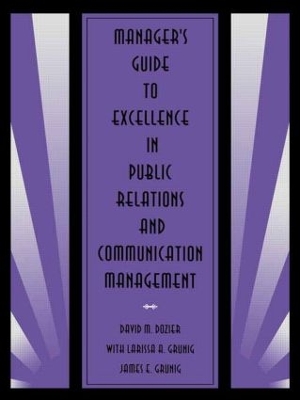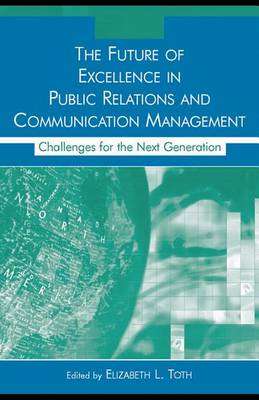Routledge Communication
3 total works
Manager's Guide to Excellence in Public Relations and Communication Management
by David M. Dozier, Larissa A. Grunig, and James E. Grunig
This book reports findings of a three-nation study of public relations and communication management sponsored by the International Association of Business Communicators (IABC) Research Foundation. The Excellence Study provides communication managers and public relations practitioners with information critical to their own professional growth, and supplies organizations with tools that help them communicate more effectively and build beneficial relations with key publics. Communication excellence is a powerful idea of sweeping scope that applies to all organizations -- large or small -- that need to communicate effectively with publics on whom the organization's survival and growth depend. The essential elements of excellent communication are the same for corporations, not-for-profit organizations, government agencies, and professional/trade associations. And they are applicable on a global basis.
The study identifies three spheres of communication excellence. These spheres consider the overall function and role of communication in organizations, and define the organization of this book. They are:
* the core or inner sphere of communication excellence -- the knowledge base of the communication department,
* the shared expectations of top communicators and senior managers about the function and role of communication, and
* the organization's culture -- the larger context that either nurtures or impedes communication excellence.
This text also examines communication excellence as demonstrated in specific programs developed for specific publics.
Excellent Public Relations and Effective Organizations
by James E. Grunig and David M. Dozier
*How can we show the value of public relations?
*What is the value of relationships?
*How do relationships affect reputation?
*What does it mean to practice communication strategically?
*How can we measure and evaluate the effects of public relations programs?
*Should communication programs be integrated?
*How does the new female majority in the profession affect communication Excellence?
This book, as well as the research it reports, is the product of symmetrical communication and collaboration. As such, it is intended for scholars, applied researchers, students, and informed professionals who understand the value of research in developing a profession, such as public relations. Knowledge of quantitative and qualitative research methods will make it easier to understand the book; however, the results are interpreted in a way that makes the analyses understandable even to those with little or no knowledge of statistics and research methods.


